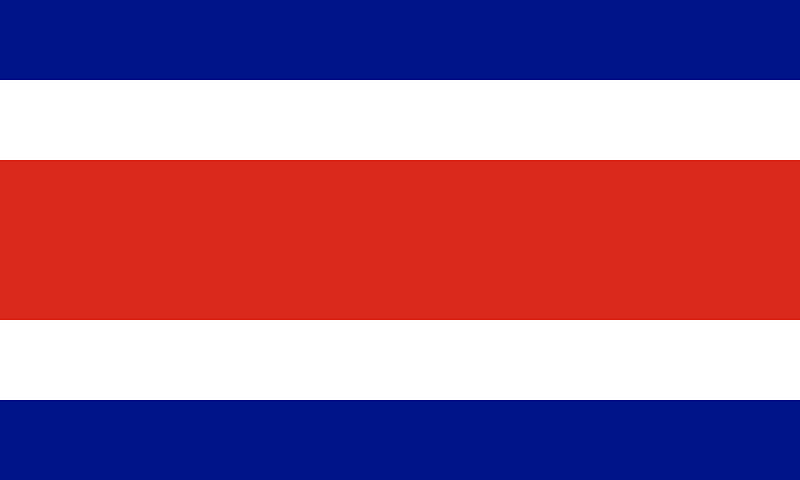This travel wiki page of Costa Rica will help guide travelers with quick and relevant information to consider when planning and visiting the country. It is difficult to find all the relevant information on Costa Rica’s culture, safety, travel restrictions, and things to do, so we summarize it all here. If anything is stale or outdated, please let us know! Let’s dive in and explore more high-level information as a Costa Rica trip planner.
Last updated February 20th of 2024.
Table of contents
National Information & Culture

Costa Rica, officially the Republic of Costa Rica, is a country in the Central American region of North America. It shares land borders with Nicaragua to the north and Panama to the southeast. Costa Rica faces the Caribbean Sea to the northeast and the Pacific Ocean to the southwest. San Jose is the country’s capital, while the national currency is the Costa Rican Colon (CRC) with the symbol ₡.
Costa Rica is one of the few sovereign countries without a standing army. Nonetheless, the country has become one of the world’s most-visited ecotourism destinations. Costa Rica boasts a well-established system of national parks, and around 30% of the country’s land areas are protected. The country has a diversified economy, with tourism as one of Costa Rica’s primary sources of income.
Sustainability is deeply rooted in their culture and traditions. Costa Rica leads by example, aiming to neutralize its carbon emissions. They are passionate about conservation, with nearly 93% of their electricity coming from renewables. Hence, visitors should respect the environment, avoid littering, and follow sustainable practices.
Once a colony of Spain, Costa Rica’s culture has obvious Spanish influences. Like the “island time” concept, Tico Time refers to the relaxed approach to punctuality in Costa Rica. Expect delays and allow for schedule flexibility, especially regarding transportation and appointments.
Visit Costa Rica’s official tourism website for more information and trip planning.
Special Travel Considerations

Each country and destination has rules and regulations that every traveler must consider. Hence, check the following considerations for hassle-free travel to Costa Rica.
Covid-19 Policy
There are no COVID-19 testing or vaccination requirements for travelers entering Costa Rica. Similarly, travelers do not need to quarantine upon arrival in Costa Rica. However, tourists nationwide must comply with health protocols when participating in tourism activities.
Travel Insurance
Travel insurance is not mandatory to enter Costa Rica. However, it is advisable to have one that covers emergency medical treatment, including COVID-19, repatriation, and evacuation. Travel insurance can protect you against the inconvenience of injury, medical emergencies, theft, and flight cancellations. In addition, it is comprehensive protection in case anything goes wrong with your trip.
Vaccines
Costa Rican authorities require all travelers from the following countries to have a yellow fever certificate of vaccination: Angola, Benin, Burkina Faso, Cameroon, the Democratic Republic of Congo, Gabon, The Gambia, Guinea, Liberia, Nigeria, Sierra Leone, Sudan, Bolivia, Venezuela, Brazil, Peru, Colombia, Ecuador, and the Republic of Guyana. The vaccine must be applied at least ten days before traveling to risk areas.
Additionally, travelers are highly recommended to have vaccines for hepatitis A and B, rabies, and tetanus before making the trip to Costa Rica.
Visa Information
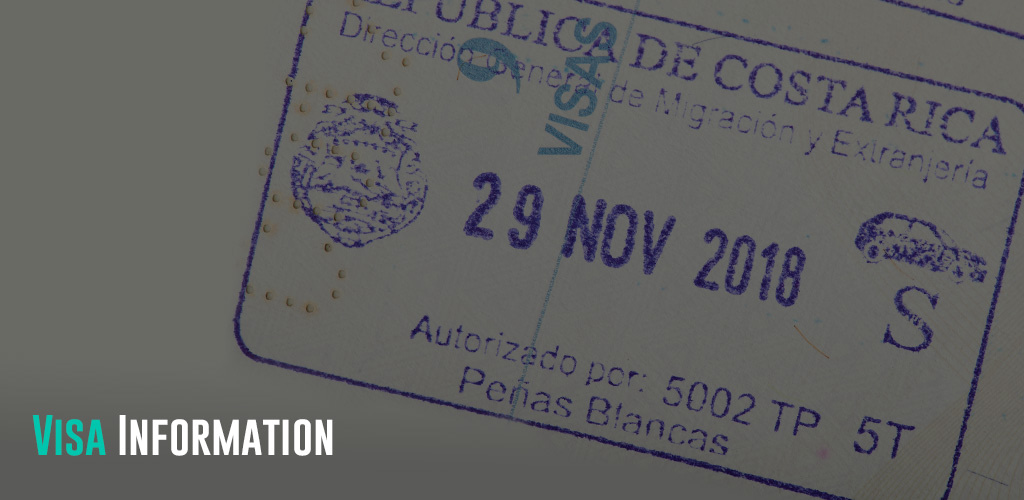
Most visitors are visa-exempt to Costa Rica and can stay for business or tourism for 30 to 180 days, depending on their passport country. Meanwhile, nationals from visa-required countries must submit their application forms and other requirements to the nearest Costa Rican embassies and consulates. Travelers from visa-required countries can also enter Costa Rica on a substitute visa if they hold a valid visa from European Union countries, Iceland, Norway, Switzerland, the UK, the US, and Canada. For more details, visitors can verify all entry requirements according to their nationality through the Costa Rican Embassy portal.
In addition to a visa, visitors to Costa Rica must have a machine-readable passport valid for their stay. However, as a standard and highly recommended rule, all visitors to a foreign country must have at least six months of valid passport when traveling. Travelers must also have proof of return or onward travel and proof of economic means.
Popular Attractions
Costa Rica is a great ecotourism destination with extensive offerings, including rainforests, volcanoes, mountain rivers, natural hot springs, beaches, national parks, and forest reserves. With around 30% of the country’s land area protected, a trip to Costa Rica allows one to visit 20 national parks, 26 protected areas, nine forest reserves, eight biological reserves, and seven wildlife sanctuaries.
San Jose
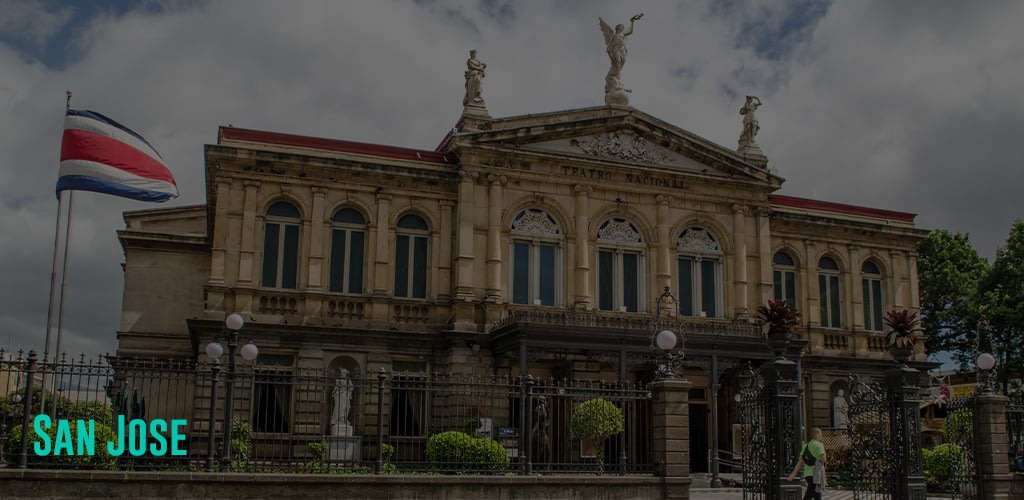
Nestled in the Central Valley, San Jose is the bustling metropolis and capital of Costa Rica. The city offers a vibrant blend of culture, history, and natural beauty. It is also where worldwide visitors converge to explore its diverse architecture, reflecting a rich Costa Rican heritage. Moreover, San Jose boasts world-class museums, parks, theaters, historic buildings, and elegant European-inspired architecture with majestic volcanoes and lush green hills.
Must-visit attractions in San José include the Jade Museum, offering insights into Costa Rica’s jade trade history, and the National Museum, housed in a historic fortress and showcasing pre-Columbian artifacts. Coronado, a suburb of San José, offers a peaceful retreat close to nature, with access to Braulio Carrillo National Park and Barva Volcano.
For shopping enthusiasts, Avenida Central is a bustling area with shops selling various goods, while nature lovers can explore Los Quetzales National Park, home to vibrant quetzal birds. It is also where adventure enthusiasts can partake in different sports activities, from hiking to birdwatching. Meanwhile, La Sabana Metropolitan Park offers a tranquil urban oasis, perfect for a relaxing stroll amidst lush greenery and an artificial lake. Moreover, La Sabana is home to the Costa Rica Art Museum.
Manuel Antonio National Park
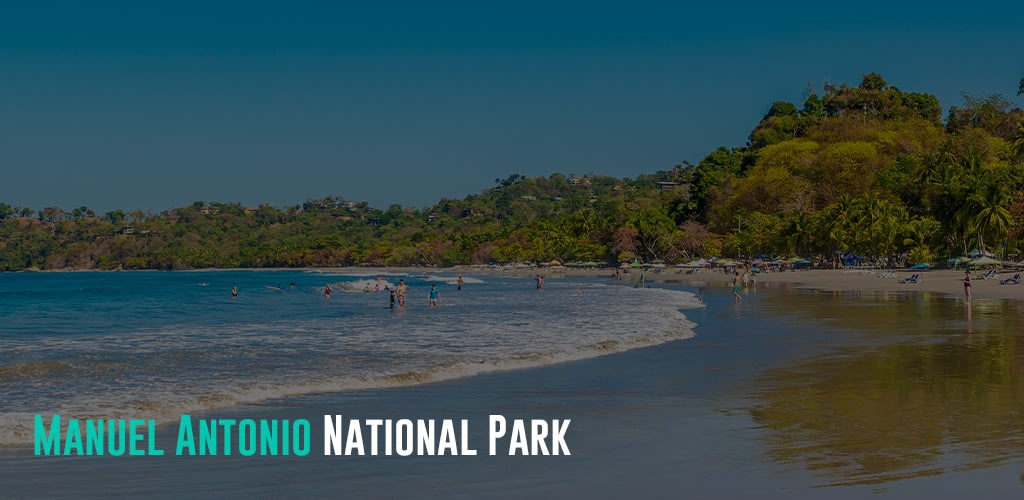
Manuel Antonio National Park, nestled on Costa Rica’s Pacific Coast near Quepos, is the country’s smallest national park, but its beauty and biodiversity are unparalleled. The park spans 1,983 hectares and boasts beautiful marine environments, tropical forests, endangered flora and fauna, a mangrove swamp, and a 14-hectare lagoon. Moreover, the park is teeming with wildlife, including capuchin monkeys, sloths, coatis, and various bird species endemic to the region.
Forbes has recognized Manuel Antonio as one of the world’s 12 most beautiful national parks, a testament to its stunning beaches, dense forests, and rich biodiversity. The park’s infrastructure continually evolves to provide visitors with a memorable experience while preserving its natural integrity.
Visitors flock to Manuel Antonio for its scenic beauty, favorable climate, and abundance of activities. From relaxing on pristine beaches like Espadilla Sur, Manuel Antonio, and Puerto Escondido to exploring the lagoon and mangroves, there’s no shortage of adventures here.
Whether strolling along forest trails or basking in the sun on soft-sand beaches, Manuel Antonio National Park offers a captivating blend of natural beauty and paradise for wildlife enthusiasts.
Arenal Volcano National Park
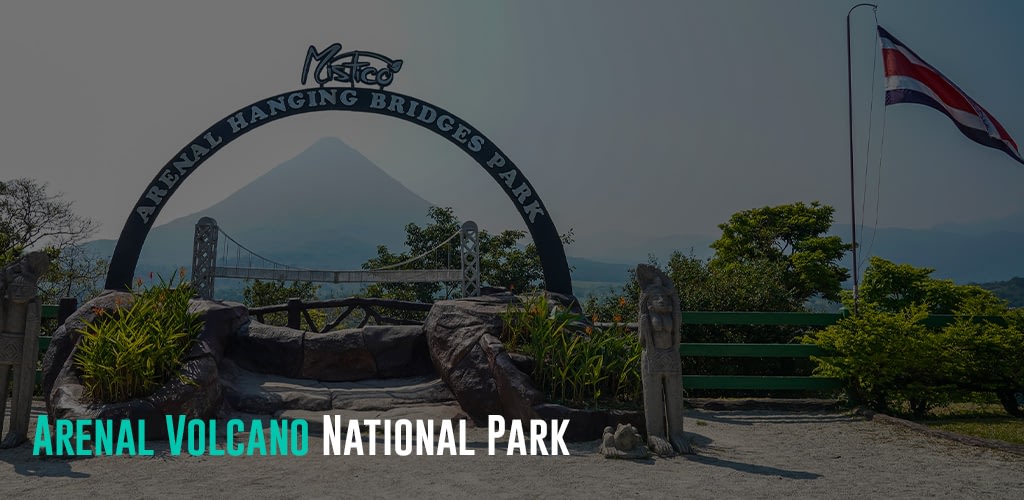
Arenal Volcano National Park is between the foothills of the Cordillera de Tilaran mountain range and the San Carlos plains of northwest Costa Rica. One of the most-visited destinations in Central America, the park offers a blend of fiery volcanic activity and lush landscapes. Arenal is home to natural hot springs and boasts a diverse fauna and wildlife, with numerous bird, reptile, amphibian, and mammal species. Around the park are also remains of lava tracts from the previous eruptions.
Dominating the park is the majestic Arenal Volcano, once one of the country’s most active volcanoes. The park also encompasses the serene Lake Arenal, creating a perfect harmony of adventure and relaxation.
Visitors to Arenal can embark on thrilling zip line adventures, relax in the rejuvenating hot springs, or explore hiking trails leading to lava flows and the stunning La Fortuna Waterfall. The nearby town of La Fortuna provides a charming base for exploration, offering breathtaking views of the volcano and access to the park’s wonders.
Monteverde Cloud Forest Reserve
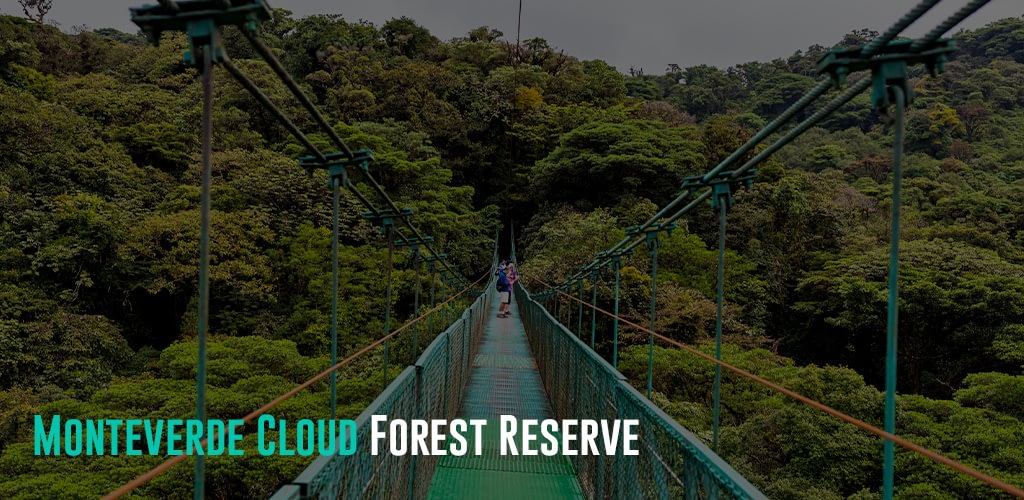
Nestled in the Tilarán Mountains, the Monteverde Cloud Forest Reserve spans 10,500 hectares, showcasing Costa Rica’s dedication to conservation. Boasting 2,500 plant species, including an unparalleled variety of orchids and diverse wildlife, it’s a haven for nature enthusiasts. The reserve houses over 100 mammal species, 400 bird species, and 120 reptilian and amphibian species.
A paradise for birdwatchers, the reserve offers glimpses of the resplendent quetzal, three-wattled bellbird, and the endangered great green macaw. Monteverde has a mysterious allure, creating a distinctive mountain rainforest with over 3,000 species of animals and plants.
A top destination for ecotourism, the reserve sustains various mammals, amphibians, and reptiles. Visitors can enjoy organized hikes or canopy tours featuring zip lines, bridges, and cable cars. Activities for tourists include birdwatching, hiking, canopy tours, and exploring the unique flora and fauna.
Tortuguero National Park

Tortuguero National Park is a gem in Costa Rica’s Limón Province. Covering 76,937 hectares, it comprises marine and terrestrial areas, with 99% of the land dedicated to resource protection. Renowned for safeguarding the largest green turtle-nesting beach in the Western Hemisphere, the park’s remote location necessitates access by boat or plane.
Tortuguero National Park is a paradise for nature enthusiasts, bird watchers, and turtle lovers. Home to four of the world’s eight species of marine turtles, it is also a habitat for the endangered West Indian manatee. While turtle watching remains a highlight activity, visitors can explore the park’s meandering rivers, lush lagoons, and hiking trails, providing opportunities to spot monkeys, sloths, kinkajous, and various amphibians. Though unsuitable for swimming due to strong currents, its beaches host nesting turtles. Guided tours enable visitors to explore its meandering rivers and lush landscapes, providing an authentic encounter with Central America’s raw beauty.
The park is home to 734 plants, 442 birds, 138 mammals, 118 reptiles, 58 amphibians, and 460 anthropoid species. Some featured wildlife in TNP are green turtles, black turtles, green macaws, caiman, jacana, and anhinga.
Tortuguero offers research opportunities and ecotourism experiences with its diverse ecosystems, showcasing Costa Rican Caribbean flora and fauna.
Corcovado National Park
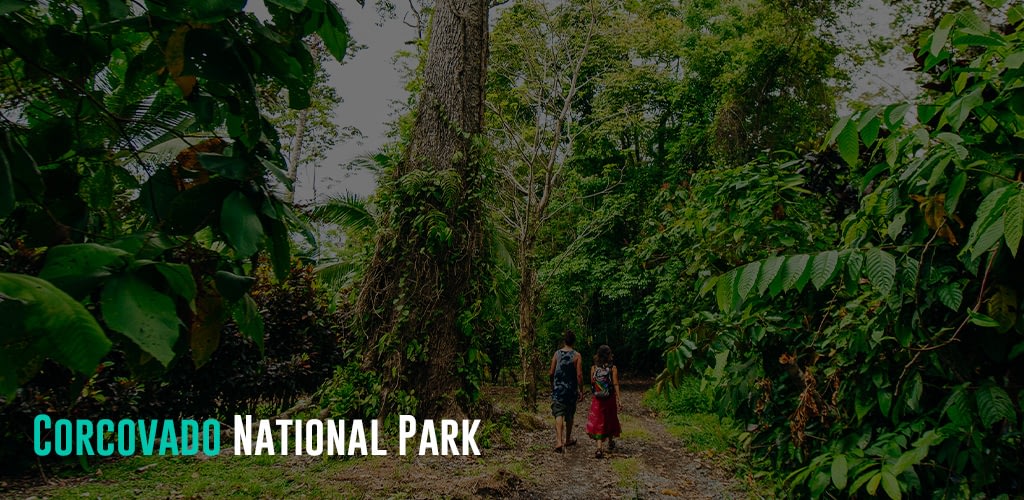
Corcovado National Park spans 41,788 hectares and preserves an extraordinary ecosystem on Costa Rica’s Osa Peninsula. The park has diverse habitats, including beaches, wet forests, and mangrove swamps. In addition, Corcovado is home to an astounding array of wildlife, from tapirs and jaguars to scarlet macaws, offering an unparalleled experience for nature enthusiasts. Guided tours are mandatory, ensuring visitors can explore its extensive trails safely. Alternatively, visitors can access the park by boat or plane to the Sirena station.
The park provides various visitor services, including information, ranger stations, trails, restrooms, and camping areas. Adventurous travelers can embark on hikes through dense rainforests, keeping an eye out for monkeys and colorful birds. Coastal tracks offer opportunities to observe marine life, with sea turtle species nesting on its beaches.
Beyond the park, the Osa Peninsula offers other attractions like Drake Bay, Puerto Jimenez, and Rancho Quemado. These communities provide supplementary tourist services, including accommodations and activities like surfing, diving, snorkeling, and fishing. The area’s commitment to conservation and rich biodiversity make it a haven for eco-travelers seeking immersive experiences in one of Central America’s most pristine regions.
Poas Volcano National Park
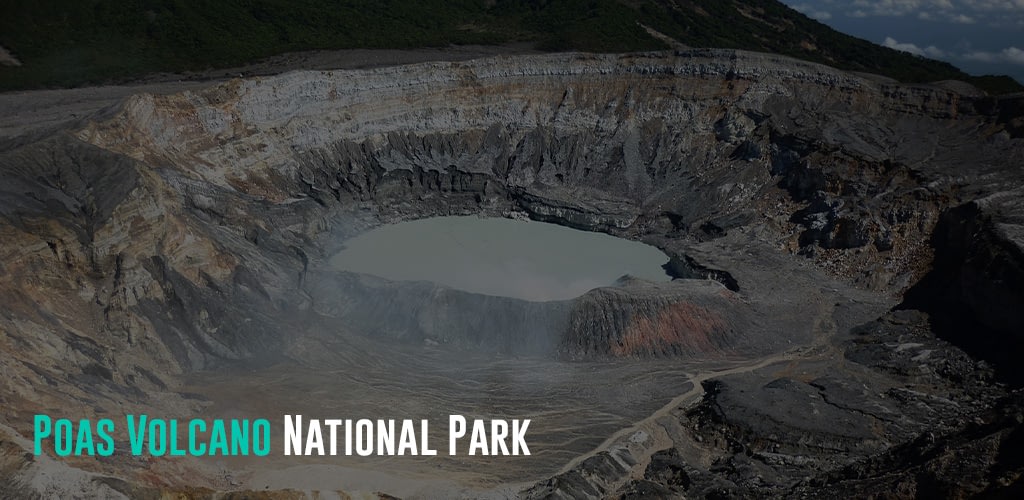
The Poás Volcano National Park, boasting Costa Rica’s largest and most active volcano, is a popular destination for visitors seeking natural wonders. Rising 2,708 meters above sea level, the volcano features a vast main crater housing the stunning Laguna Botas, a blue-green lake. Surrounding the volcanic area are diverse ecosystems, including cloud forests and rainforests, which host a variety of bird species and small mammals.
Located in Alajuela, the park offers easy access from major cities, inviting visitors to explore its attractions via well-maintained hiking trails. The park’s temperate climate, characterized by a gentle drizzle, enhances the experience of traversing its network of trails.
Aside from its natural beauty, the park offers opportunities to indulge in local cuisine, featuring fruits like strawberries and dairy products. Nearby communities such as Poasito, Fraijanes, Varablanca, and San Pedro de Poás offer cultural insights and are recommended stops for a comprehensive tour.
Activities for tourists include hiking along marked trails, bird-watching, and enjoying the diverse cuisine the surrounding communities offer. Additionally, visitors can appreciate the cultural manifestations of the local communities and immerse themselves in the area’s unique atmosphere.
Santa Teresa

Santa Teresa on the Nicoya Peninsula is a serene coastal town famous for its picturesque beaches, like Playa Carmen and Playa Santa Teresa, which are perfect for surfing. The town’s relaxed vibe, with its charming cafes and yoga studios, embodies the Pura Vida lifestyle, appealing to surfers, yogis, and leisure seekers.
Beyond the beaches, Santa Teresa is nestled amidst lush jungles, offering opportunities for wildlife sightings during hikes. Howler monkeys, iguanas, and diverse bird species inhabit these verdant landscapes.
Rincón de la Vieja National Park
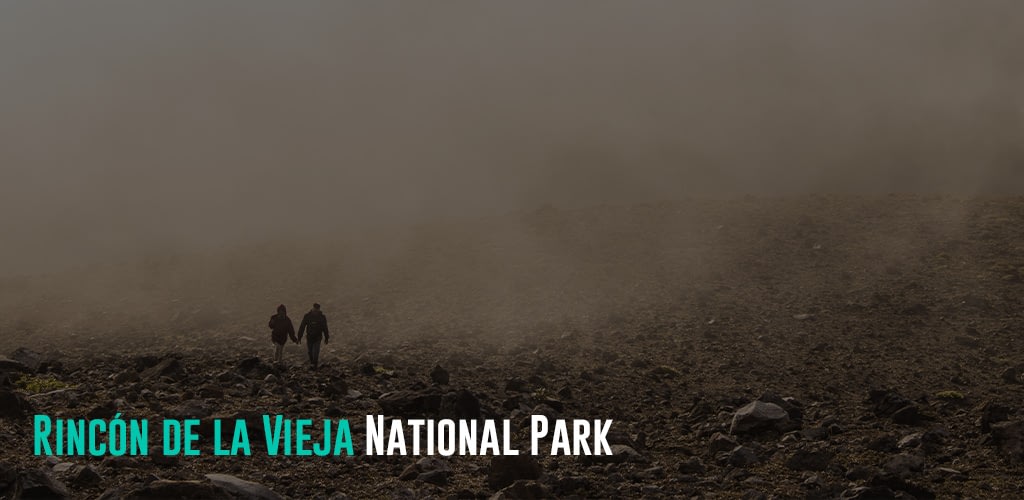
Rincon de la Vieja National Park, home to the Rincon de la Vieja Volcano, encompasses two distinct areas, Las Pilas and Santa Maria, offering diverse landscapes ranging from dry forests to cloud forests. Visitors can explore trails leading to volcanic craters, waterfalls, and hot springs, providing opportunities to witness volcanic activity up close.
The park features amenities like restroom services, picnic areas, and camping facilities near the administration area. Visitors can embark on hikes through different ecosystems, enjoying panoramic views of the ocean and unique geological formations. Highlights include the La Cangreja Waterfall, known as the ‘Blue Lagoon,’ and the chance to observe wildlife such as tapirs, sloths, and monkeys.
One of the most popular activities is a hike to the summit of Rincon de la Vieja Volcano, offering spectacular views of the Nicoya Peninsula and Nicaragua on clear days. Less strenuous trails lead to waterfalls and hot springs, providing opportunities for relaxation and immersion in nature. Guided tours are available for those seeking insights into the park’s geological and ecological significance.
La Paz Waterfall Garden

La Paz Waterfall Gardens, located near Poás Volcano, offers a captivating blend of natural beauty and wildlife conservation efforts. Spread over 70 acres, this privately owned park is a haven for families and nature lovers.
The park’s highlight is the stunning La Paz waterfall, where rainwater from cloud forests cascades 37 meters into a pool below. Visitors can explore well-maintained trails alongside rushing waters, enjoying glimpses of vibrant toucans, playful monkeys, and other intriguing wildlife.
Admission includes access to various attractions such as the serpentarium, butterfly observatory, jungle cat exhibit, and ranarium (frog exhibit). La Paz Waterfall Gardens is a must-visit attraction in Costa Rica, offering a perfect combination of natural beauty and wildlife encounters.
Additionally, the park’s convenient location on the Barva to San Miguel highway makes it easily accessible for visitors. Whether as a starting point or a final stop in Costa Rica, La Paz Waterfall Gardens offers an unforgettable experience.
Papagayo Peninsula
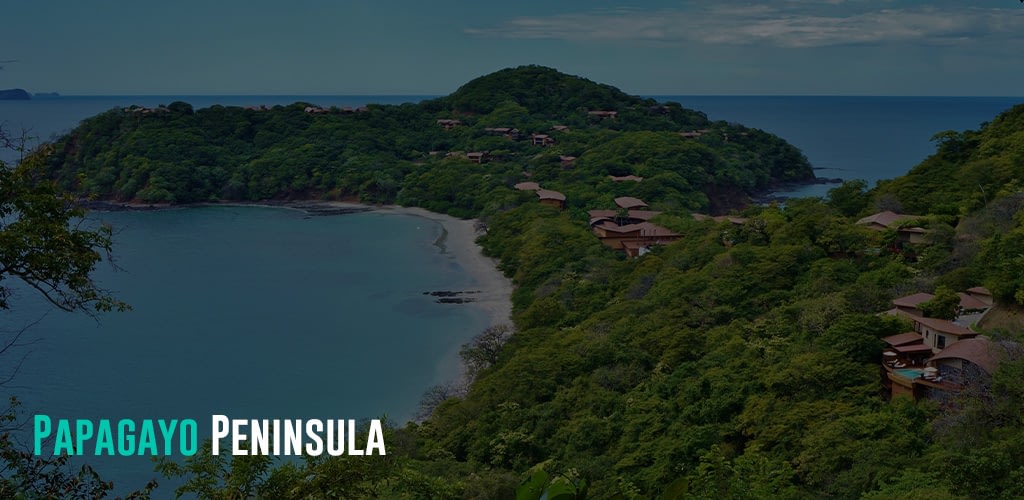
The Papagayo Peninsula is a tropical paradise known for its pristine beaches, lush landscapes, and luxury offerings on Costa Rica’s North Pacific coast in the Guanacaste province. The peninsula’s unique geography, shaped by volcanic activity and protected by tall mountains, ensures a favorable climate year-round, making it an ideal destination for travelers seeking fairy-tale vacations.
The Costa Rica Tourism Board has designated Papagayo for luxury tourism development while prioritizing nature conservation. Resorts and villas blend seamlessly into the natural landscape, maintaining 70% natural requirements to preserve wildlife habitats. Visitors can experience firsthand encounters with diverse fauna, from monkeys and iguanas to peculiar birds and butterflies.
Papagayo offers various activities and attractions, including sunset catamaran cruises, day trips to national parks, and offshore sport fishing. The private beaches provide opportunities for water activities such as kayaking and snorkeling, while eco-conscious travelers can explore the area’s diverse dry forests through kayaking excursions and birdwatching. Additionally, golf enthusiasts can tee off at the Arnold Palmer Golf Course, which doubles as a nature reserve offering guided tours of native flora and fauna.
While luxury resorts dominate the peninsula’s accommodations, day passes are available for visitors wishing to enjoy resort amenities. Taxis are readily available, although renting a car provides flexibility for exploring nearby attractions like Rincon de la Vieja National Park and Borinquen Hot Springs.
Rio Celeste
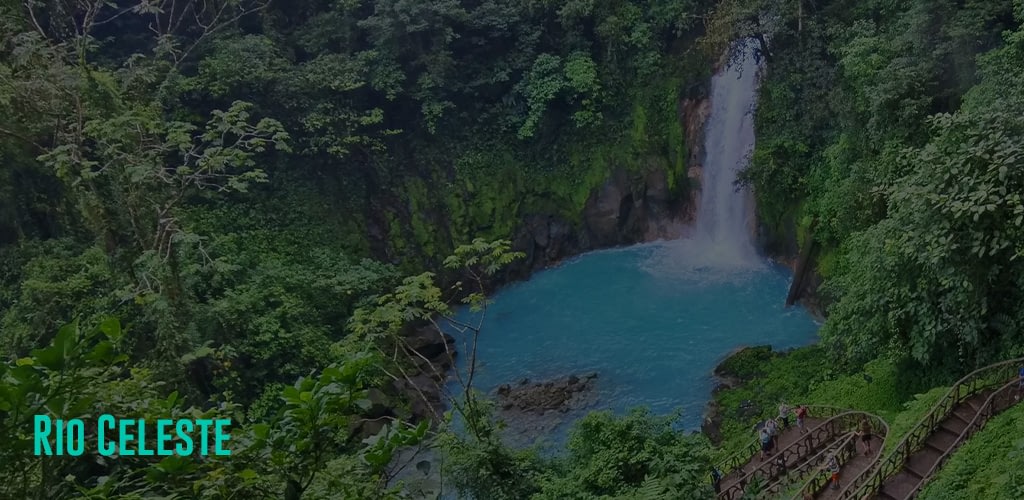
Rio Celeste, located in Tenorio Volcano National Park, is renowned for its stunning turquoise coloration, created by a chemical reaction between volcanic minerals and the river’s waters. The area boasts several attractions, including the majestic Rio Celeste Waterfall, plunging 98 feet into the river amid lush jungle surroundings.
Visitors can explore numerous hiking trails, with the main trail leading to the waterfall and river confluence, offering breathtaking views. The trails are well-marked, making them easy to navigate. Along the way, hikers can marvel at the Laguna Azul, a mesmerizing blue lake. Travelers can also witness the borbollones, where the water boils and creates tiny bubbles. Another highlight is the Tenideros, where two differently colored rivers meet, giving rise to the unique hue of Rio Celeste.
While swimming is prohibited in the controlled area near the waterfall and confluence, visitors can still enjoy the river outside the national park boundaries. However, it’s essential to be cautious due to the high level of copper sulfate in the water, which can irritate sensitive skin.
In addition to hiking, tourists can drive along a 14-kilometer stretch of the river, stopping to admire the scenery and take photos. Rio Celeste offers a magical experience for nature lovers and photographers alike, with its enchanting beauty and unique geological features sure to leave a lasting impression.
Primary Spoken Language(s)
Spanish is the official language in Costa Rica. The country is also home to local languages such as the Bribri, Maléku, Cabécar, and Ngäbere. Many Costa Ricans also speak English well, while a significant population speaks French, Portuguese, or German as their secondary language.
Safety Concerns

Costa Rica is a safe destination for travelers, ranking 39th out of 161 countries on the 2023 Global Peace Index. As of July 17, 2023, Costa Rica has a Level 2 Travel Advisory from the US Department of State. Hence, travelers can practice some safety precautions.
Petty crimes like theft, pickpocketing, and bag snatching are common problems in Costa Rica. Criminals target tourist areas, including national parks, resorts, transport hubs, and public transport. High-risk areas for theft include the Coca-Cola bus station, inner downtown areas, and the road to San Jose International Airport.
Thieves usually target victims for their smartphones, wallets, or purses. Hence, be vigilant in public and always hold your bags and belongings. Keep valuables, cellphones, and jewelry out of sight. Do not wear flashy items or leave valuables unattended on the table, beach, or parked vehicles. Avoid unsolicited help from strangers and isolated areas on foot, especially at night.
In an emergency, dial the national hotline number 911 to request assistance.
Natural Hazard
Costa Rica sits on the Pacific Ring of Fire and is prone to natural hazards like earthquakes and volcanic eruptions. It has five active volcanoes out of the country’s volcanic herds. The country is also susceptible to tsunamis due to earthquakes.
Some Costa Rican beaches can have strong currents and rip tides that are dangerous for swimming. Also, some public beaches lack lifeguards and warning signs for unsafe conditions. Therefore, get local advice on beach and surf conditions before swimming.
Like the rest of the Caribbean, Costa Rica’s hurricane season runs from June to November. Meanwhile, landslides, mudslides, and floods can occur during heavy rainfall in the rainy months of May to November. The rainy season can sometimes extend until January.
Remember to monitor the National Hurricane Center forecasts and the World Meteorological Organization warnings when traveling during this season. It is also best to check the Costa Rica National Institute of Meteorology for the weather forecast and updates when planning your trip.
Health Hazards
Notably, Costa Rica had a history of Zika virus outbreaks and a few reported cases in 2023. Malaria is also a risk in Limon and Puntarenas, including near the border with Panama. Other insect-borne diseases like dengue, chikungunya, Chagas, and leishmaniasis are at risk during the rainy season from May to November.
Budget Consideration

Traveling to Costa Rica is relatively expensive based on regional standards in Central America. But there are plenty of ways for budget-conscious travelers to save with proper planning.
Accommodation
Hostels are widely available in Costa Rica, where a dorm bed starts at $12 per night and $35 for a private room. Free Wi-Fi is standard; many hostels also include complimentary breakfast and self-catering facilities. Some hostels on the beach areas even have pools.
Travelers can also find budget hotels between $50 and $70, and most beachside properties have pools. Another option is staying at Airbnb properties at $40 for a room and around $75 for an entire apartment. For more comfort, visitors can stay in a 3-star hotel for $80 and a 5-star hotel for $120.
For backpackers traveling with a tent, camping is available nationwide. Campground prices start at $10, and most national parks have campsites.
Food
Staples in Costa Rican cuisine are rice and beans, along with potatoes, plantain, pork, and beef. Popular dishes include the national dish gallo pinto, casado, tamal, and sopa negra, to name a few.
Travelers can find empanadas and other savory snack for less than $4. Expect to pay $6-9 for traditional meals in cheap local restaurants called sodas and around $9 for fast food and Chinese meals. Meanwhile, dining at a mid-range restaurant costs $12 for a burger or pasta dish, $15 for fish, $20 for steak, and around $30 for seafood.
Travelers who want to go grocery shopping and cook can expect to spend between $40 and $50 weekly on basic staples like rice, beans, eggs, fruit, vegetables, and meat or fish.
Attractions and Transportation
Admission fees to national parks and reserves in Costa Rica vary. For example, Arenal Volcano National Park collects $5 for foreign tourists, $15 at Tortuguero, and $18 at Manuel Antonio National Park. Admission to La Paz Water Garden is $50.
While most beaches are free, private surf lessons cost between $80 and $100 daily. In addition, board rental is $10, one tank dive starts at $75, and a group fishing excursion costs $105.
On the other hand, traveling by bus in Costa Rica is inexpensive at $0.40 for inter-city short trips. For comfort, hiring a sedan costs around $60 per day.
Average Two-week Cost
Budget travelers in Costa Rica can live with a $50 daily budget or $700 for two weeks. It covers the costs of staying in a hostel dorm bed, having cheap street food, cooking most of the meals, and taking the bus for transportation. On this budget, travelers mainly do free activities on the beach and hiking in the parks.
On a mid-range budget of $150 daily or $2100 in two weeks, travelers can comfortably stay in a 3-star hotel. The budget also includes dining out at local and mid-range restaurants, taking occasional taxis, and doing a few paid tours and activities.
Lastly, travelers can enjoy luxury in Costa Rica from $250 daily to $3500 for two weeks. It includes staying in a five-star hotel and beachfront properties, dining anywhere, vehicle rental, and availing all the paid tours and activities they want. So, for them, the sky is the limit for travel.
Customs And Import Restrictions

Travelers to Costa Rica can bring personal goods and effects free from import duties and taxes. It includes clothing, medication, personal computers, and professional and recreational instruments necessary for the trip. They may also bring along goods not exceeding the following:
- 5 liters of wine, brandy, or liquor
- 500 grams of manufactured tobacco
- 2 kilograms of candy
- gifts not exceeding $500 and not in commercial volume
- 4 weapons for hunting or target shooting, including a shotgun or hunting rifle, and 500 shots, subject to the regulations by the Weapons and Explosives Law.
But note that alcohol and tobacco allowance exemptions do not apply to travelers under 18. Meanwhile, travelers bringing over $10,000 or its equivalent to foreign currency must declare such amount to Customs. The same applies when departing Costa Rica with over $10,000 currency.
Customs Law in Costa Rica imposes restrictions on some goods and may require permits from pertinent authorities and an import or export permit. These include the following:
- weapons and ammunition
- live animals, plants, and raw food
- asbestos, cosmetics, and pharmaceutical products
- vehicle tires
Similarly, Costa Rica customs authorities prohibit the entry of the following goods and items:
- illegal drugs and narcotics
- endangered species of plant, live animals, and their products
- counterfeit money and goods
- pornographic materials
- liquid fuels, flammables, corrosive chemicals
- used shoes
- import husk, coffee husk, and used cardboard egg separators
For further information, please visit Costa Rica’s Customs Authority portal for the list of import and export restrictions.
Climate Considerations

Oceanic factors, topographical location, and geographical features such as mountains, plains, and plateaus influence Costa Rica’s climate. The country’s two main regions, the Pacific and the Caribbean, exhibit distinct precipitation and temperature patterns. Depending on the altitude and proximity to the coast, the annual average temperature ranges between 21 °C and 35 °C.
In the Pacific region, there are well-defined dry and rainy seasons. The dry season lasts from December to April, with March being the driest and hottest. From May to November, the rainy season prevails, with September and October experiencing the highest rainfall due to cyclone systems and monsoon winds. July and August see a relative decrease in rainfall, known as “little summer,” accompanied by intensified trade winds.
On the other hand, the Caribbean side doesn’t have a well-defined dry season and experiences steady rainfall throughout the year. Two relatively dry periods occur between February and March and September and October in the coastal areas. The rainiest months are November to January and May to August, with December experiencing the highest rainfall due to the effects of cold fronts from the Northern Hemisphere.
Like the rest of the Caribbean, Costa Rica’s hurricane season is June to November. Also, tropical storms can happen year-round.
Primary Transportation Options
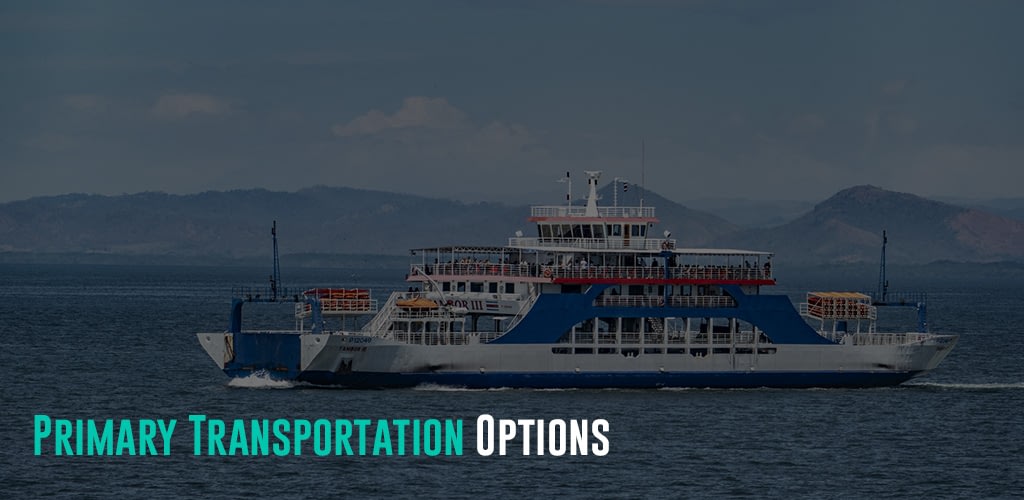
Costa Rica’s transport system has modern infrastructure, such as highways, airports, and public transportation networks in urban areas. However, the system may not be as extensive as in developed countries, and road conditions in rural areas may vary.
Check out the Costa Rica Tourism Board comprehensive transportation guide and schedule to help travelers plan their trip.
Air
Costa Rica has several international airports and smaller domestic airports, facilitating air travel both domestically and internationally, with Juan Santamaría International Airport (SJO) in Alajuela as the main tourist gateway. Travelers visiting Guanacaste, Monteverde, and La Fortuna can also enter Costa Rica through Liberia’s modern Daniel Oduber International Airport (LIR). While SJO welcomes visitors to the bustling city center, LIR airport connects tourists to the most beautiful beach destinations. These primary airports receive hundreds of monthly flights from major cities and international airlines. In addition, Avianca Costa Rica is the national airline, operating domestic and international destinations.
Other airlines that serve the country’s domestic air traffic include SkyWay, Sansa, Aerobell, & Air Caribe. These domestic airlines operate various small single and double-propeller planes with passengers between 10 and 46 at a time. Depending on the destination, airfare starts at $60. With these airlines, travelers can quickly reach off-the-beaten paths and remote regions like Osa Peninsula, Tamarindo, Quepoz, Puerto Jimenez, La Fortuna, or Arenal Volcano airports. Remember to take only small luggage (10 pounds or less) with you when taking domestic flights as they have limited allowance.
Ferry
Ferries connect the mainland of Costa Rica with the Pacific and Caribbean coasts, providing relaxing and scenic transportation options. Travelers visiting Montezuma, Santa Teresa, Malpais, or other nearby destinations can take the ferry services from Puntarenas to Paquera and Puntarenas to Playa Naranjo. Moreover, travelers have the option to bring along vehicles.
Train
Costa Rica has limited train lines operated by the state-owned company Instituto Costarricense de Ferrocarriles (INCOFER) for as low as $0.70. The train services connect the principal cities of the Central Valley to San Jose, with main stations at San José, Cartago, Belén, Heredia, and Curridabat. Commuter trains connect San Jose and Heredia, while Interurban trains operate Belén – Pavas – Curridabat, San José – Cartago, and San José – Heredia – Alajuela.
Car Rental
Renting a car in Costa Rica is suitable for exploring off-the-beaten-path destinations unreachable by bus. However, some roads are in poor condition and lack warning signs. Hence, hiring a car with a driver to shuttle you and provide the necessary information is best.
Car rental can be arranged in advance or on arrival, starting at $80 daily. Meanwhile, hiring a car with a driver costs around $100 daily. Some rental companies require drivers to be at least 25 years old and may face extra charges if under 25. Also, note that they drive on the right side of the road.
Travelers can check the Costa Rica Tourism Board portal for a list of registered car rental companies.
Bus
Bus travel is the cheapest and easiest way of getting around in Costa Rica. Buses are reliable and operate on set routes and scheduled timetables. While fares vary on the service provider and travel distance, a short inter-city trip ranges between $0.40 and $0.75
Public buses in Costa Rica provide comfortable journeys from San Jose to significant attractions like Manuel Antonio, Monteverde, La Fortuna, Jaco, etc. Some reliable bus companies operating in Costa Rica include Gray Line and Interbus. However, bus travel can be slow and take several hours with poor road conditions. For example, traveling from San Jose to the Osa Peninsula takes 9 hours on the bus compared to one hour of air travel.
Travelers can check the Costa Rica Tourism Board comprehensive guide and schedule to help plan their trip.
Taxi
Taxis are the most convenient way of getting around short-distance cities and towns. They are easily identifiable by their red bodies with a yellow triangle on each side or the orange airport taxis. The standard base fare is around $2, with an increment of $1 per kilometer. Also, note that there is a surcharge for taxi services at night. While major city taxis have meters, make sure the driver turns it on upon getting in.
An alternative for local taxis in Costa Rica is the app-based services of Uber, Nova, Easy Taxi, and Rides 506. These ride-sharing app services are available in the Central Valley (San José, Heredia, Alajuela, and Cartago provinces). Remember to take only registered cabs for safety reasons.
Start Trip Planning
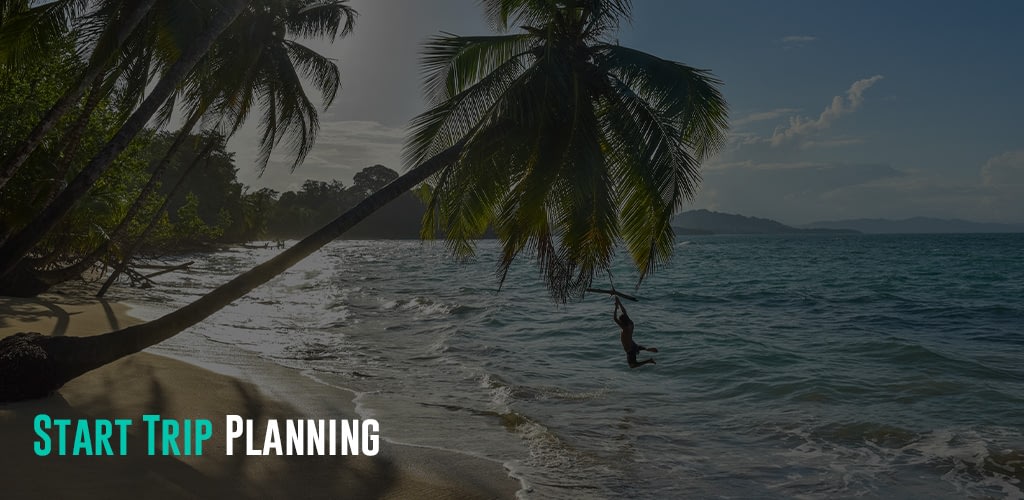
Travel-Wise is made from the ground up to help people travel more, break down the barriers that make it challenging to get going, and start your journey as painlessly as possible. Bookmark our other Country Guides to help kick-start your research for future travels. We also offer templated itineraries from our staff and community that help serve as a building block for your trip plans. Alternatively, we also utilize AI to provide a way to generate itinerary ideas. This saves much time just getting you up and running with a template. From there, you can use the trip planner to create your customized itinerary, invite friends and family for collaboration, find others from Travel-Wise to join the trip, book and track important information, journal, and share your experiences at the end or along the way!

